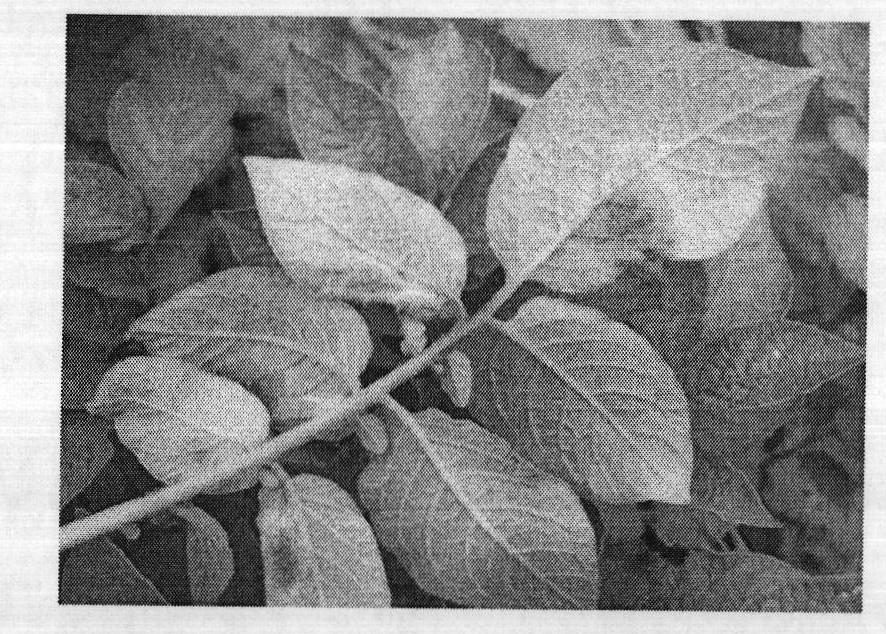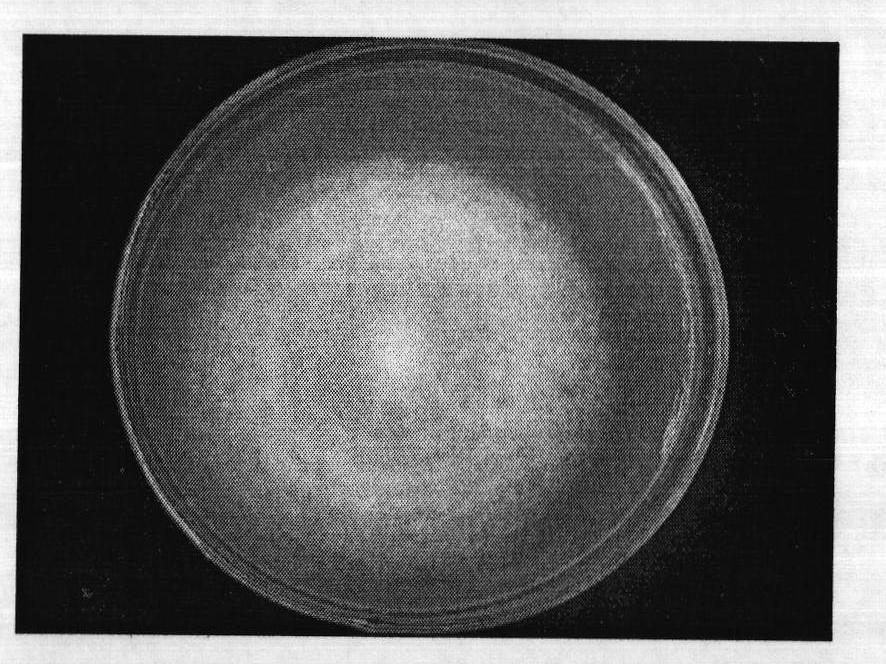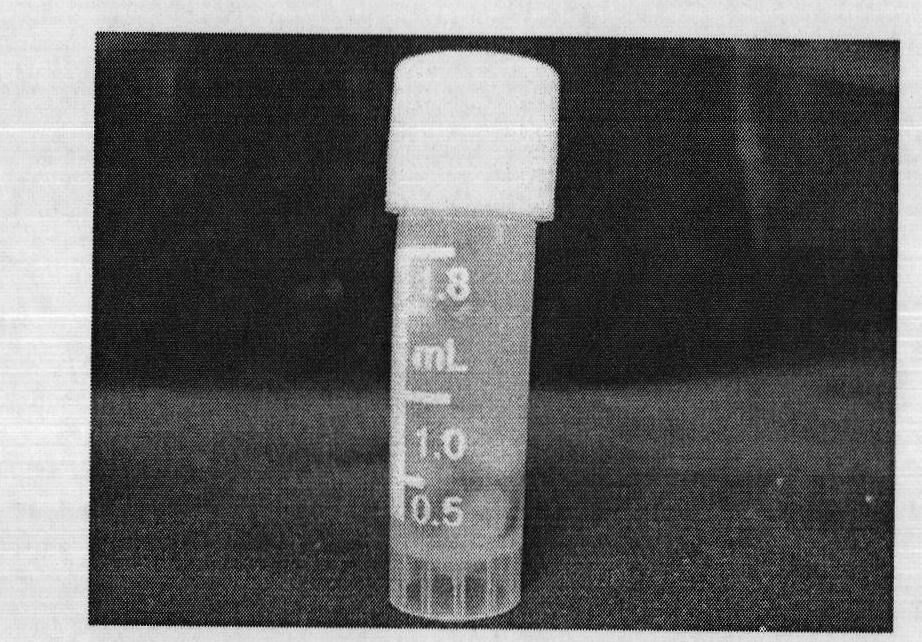Preservation method of pathogenic bacteria of potato late blight and special medium for the same
A technology of potato late blight and preservation method, which is applied in the field of preservation of potato late blight pathogenic bacteria, can solve the problems of high preservation cost, increased pollution, difficulty in long-term preservation, etc., and achieve long preservation time, simple operation and low cost Effect
- Summary
- Abstract
- Description
- Claims
- Application Information
AI Technical Summary
Problems solved by technology
Method used
Image
Examples
Embodiment 1
[0044] Embodiment 1, isolation culture and preservation of potato infestans
[0045] 1. Collection of samples of potato late blight and isolation and cultivation of pathogens
[0046] A total of 100 strains of P. infestans were isolated from Gansu Province, the main potato producing area in China. The specific method is: the diseased plants collected in the field ( figure 1) added to dry newspaper and brought back to the laboratory. In order to ensure the humidity, pour the newly prepared water agar medium (1.6%) into disposable 9cm plastic petri dishes, pour about 12-14mL medium into each dish, then let it cool in the ultra-clean bench to make it solidify. Take out the diseased samples taken back, select the leaves that are infected by pathogenic bacteria and still contain healthy parts; adjust the size of tap water to flow down in small streams, and rinse the leaves, especially the back of the leaves (mainly to wash off the zoospores produced on the back of the leaves sac...
Embodiment 2
[0065] Example 2 Bacterial strain preservation viability detection
[0066] (1) Determination of the survival rate of P. infestans after preservation
[0067] Pick one grain of rye from the 2mL cryopreservation tubes with storage time of 2 years and 1 year respectively in method II of Example 1 and put it on a 9cm flat plate containing rye tomato medium, and place it in the dark at 18°C After culturing for 7 days, observe under a microscope whether new hyphae or zoosporangia grow. Bacteria that grow new hyphae or zoosporangia are judged to be viable. In this way, the bacteria in 100 preservation tubes were detected respectively, and the ratio of the number of surviving tubes to the number of 100 tubes was counted. The experiment was repeated 3 times, and the results were averaged. Results 90% of the bacteria in the tubes kept for 2 years were alive; 90% of the bacteria in the tubes kept for 1 year were alive.
[0068] The detection results of the survival rate of the bacte...
PUM
 Login to View More
Login to View More Abstract
Description
Claims
Application Information
 Login to View More
Login to View More - R&D
- Intellectual Property
- Life Sciences
- Materials
- Tech Scout
- Unparalleled Data Quality
- Higher Quality Content
- 60% Fewer Hallucinations
Browse by: Latest US Patents, China's latest patents, Technical Efficacy Thesaurus, Application Domain, Technology Topic, Popular Technical Reports.
© 2025 PatSnap. All rights reserved.Legal|Privacy policy|Modern Slavery Act Transparency Statement|Sitemap|About US| Contact US: help@patsnap.com



